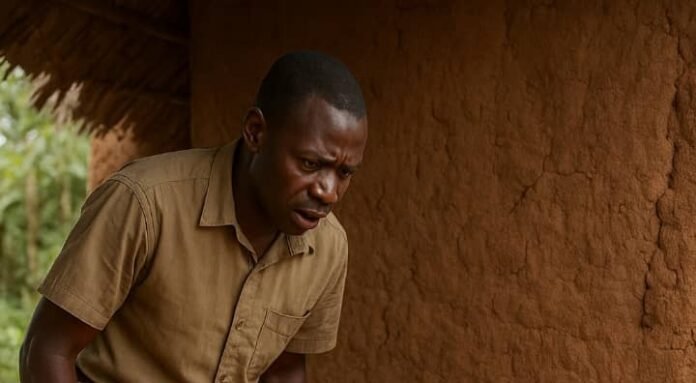By: Isaac Christopher Lubogo
Abstract
This article interrogates the Busoga cultural practice encapsulated in the phrase “Okuniina ku kigere ekisaada” [oh-koo-NEE-nah koo kee-GEH-reh eh-kee-SAH-dah]—literally, “step on your right big toe with your left foot”—as a response to encountering snakes in homesteads. Traditionally, this act was believed to immobilize the snake until others could be summoned. The paper situates the practice within African cosmology, anthropology, and zoology, demonstrating that while the literal claim of immobilizing snakes may not withstand scientific scrutiny, the practice encodes profound lessons in composure, collective response, and environmental awareness. It further argues for the preservation of such wisdom as cultural heritage while aligning it with modern conservation and safety practices.
1. Introduction
Across African societies, responses to natural threats are rarely pragmatic alone; they are ritualized, encoded in proverbs, and transmitted across generations. In Busoga, Uganda, when a snake entered a home, elders advised: “Niina ku kigere ekisaada” [NEE-nah koo kee-GEH-reh eh-kee-SAH-dah]. This command, at once practical and mystical, reveals a layered interplay between fear, ritual, and survival.
The central question is: how did such a practice emerge, why was it believed effective, and what does it reveal about African knowledge systems in light of modern zoology and anthropology?
2. The Cultural Logic: Ritual as Social Order
Snakes in Busoga cosmology carry symbolic weight. Associated with rain, fertility, and liminal spaces, serpents often featured in shrines and Musambwa [moo-SAHM-bwah] spirit cults (Roscoe, 1911; Nabirye, 2017). Their sudden intrusion into domestic spaces was thus more than biological disruption—it was cosmological disturbance.
The act of toe-stepping ritualized composure. Instead of chaotic panic, it imposed bodily discipline and collective action. It symbolized mastery of fear and the primacy of community in responding to danger. This aligns with Mbiti’s (1990) assertion that African rituals function to transform crises into socially manageable events.
3. The Cognitive Logic: Magic as Psychology
Frazer’s (1922) theory of “sympathetic magic” helps explain why the Basoga believed a bodily gesture could influence a serpent. Evans-Pritchard (1937), however, reminds us that such practices are not irrational but contextually rational—they impose order where danger threatens chaos.
By instructing the frightened individual to “do something” precise—step on one’s toe—the ritual redirected fear into structured action. This not only steadied the individual but created a predictable signal for summoning communal support.
4. The Zoological Logic: The Snake’s Perception
Modern herpetology provides unexpected validation. Many snakes rely heavily on motion detection; sudden stillness often causes them to freeze and reassess (Greene, 1997). Wildlife safety manuals globally emphasize standing still near a snake and moving away slowly when possible (World Health Organization, 2010).
Thus, the Basoga gesture—whether by design or coincidence—mirrored sound ethological practice. The snake did not remain because of mystical binding but because of reduced provocation through stillness.
5. Empirical Logic: Oral Testing Through Generations
Unlike Western science, African societies tested such practices through repeated lived encounters. Homesteads that followed the practice often reported fewer bites, while those who panicked faced greater harm. Over time, survival became evidence, and proverbs became repositories of tested wisdom. This aligns with Hountondji’s (1996) notion of “endogenous knowledge systems,” where practice is validated by historical continuity rather than laboratory experiment.
6. Efficacy and Limits
The practice was effective insofar as it trained individuals in calmness and collective response. Yet it has limits. Certain species will strike regardless; others may not remain still. Modern guidance stresses relocation and conservation over killing, coupled with immediate medical response where bites occur (Warrell, 2019).
The danger lies not in the wisdom itself but in over-romanticizing it into reckless overconfidence.
7. Contemporary Application: Preserving the Wisdom
Today, “Okuniina ku kigere ekisaada” [oh-koo-NEE-nah koo kee-GEH-reh eh-kee-SAH-dah] should be preserved not as literal magic but as cultural pedagogy:
1. Ethos of Stillness. Teach composure in emergencies.
2. Communal Responsibility. Encourage alerting others rather than confronting danger alone.
3. Conservation Ethic. Replace snake-killing with safe relocation.
4. Cultural Documentation. Record proverbs, oral testimonies, and cosmologies to preserve Busoga intellectual heritage.
8. Conclusion
The Basoga rite of toe-stepping is neither folly nor superstition. It is a compact philosophy of danger, discipline, and community. It demonstrates how African societies encoded empirical observation into ritual, giving it symbolic weight and mnemonic power.
The serpent may embody fear, but the human who steps upon their own toe embodies composure. In that act, the ancestors remind us that survival begins with stillness, order, and the calling of community.
9. Final Reflection: Meaning for Today’s Generation
For today’s generation, “Okuniina ku kigere ekisaada” [oh-koo-NEE-nah koo kee-GEH-reh eh-kee-SAH-dah] is more than a quaint relic of folklore. It is a parable for life in a world overwhelmed by speed, panic, and noise. The serpent may no longer only be the literal reptile in the homestead; it has become the anxieties of unemployment, the distractions of technology, the storms of politics, and the uncertainties of climate change.
To “step on the toe” is, therefore, to choose composure over chaos, reflection over reaction, and community over isolation. It is a reminder that ancestral wisdom, though wrapped in ritual, carries universal lessons: survival belongs to the steady, not the frantic; to the collective, not the solitary.
Thus, the rite endures not as superstition but as philosophy—an African compass for navigating both ancient fears and modern storms.
References
Evans-Pritchard, E. E. (1937). Witchcraft, Oracles, and Magic among the Azande. Oxford: Clarendon Press.
Frazer, J. G. (1922). The Golden Bough. London: Macmillan.
Greene, H. W. (1997). Snakes: The Evolution of Mystery in Nature. Berkeley: University of California Press.
Hountondji, P. (1996). Endogenous Knowledge: Research Trails. Dakar: CODESRIA.
Mbiti, J. S. (1990). African Religions and Philosophy. Oxford: Heinemann.
Nabirye, M. (2017). “Snakes and Spirituality in Busoga.” Journal of African Cultural Studies, 29(2), 145–162.
Roscoe, J. (1911). The Baganda: An Account of Their Native Customs and Beliefs. London: Macmillan.
Warrell, D. (2019). “Snakebite: A Global Challenge.” New England Journal of Medicine, 380, 1881–1884.
World Health Organization. (2010). Guidelines for the Management of Snakebites. Geneva: WHO.








